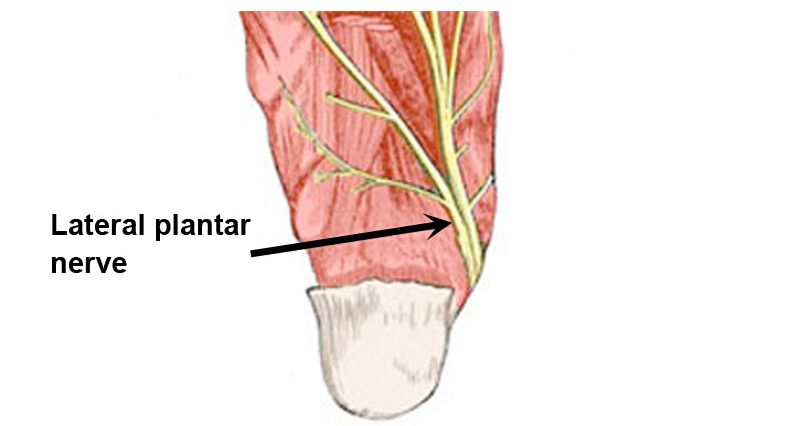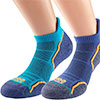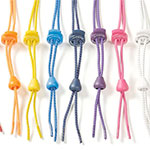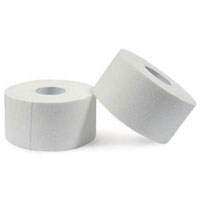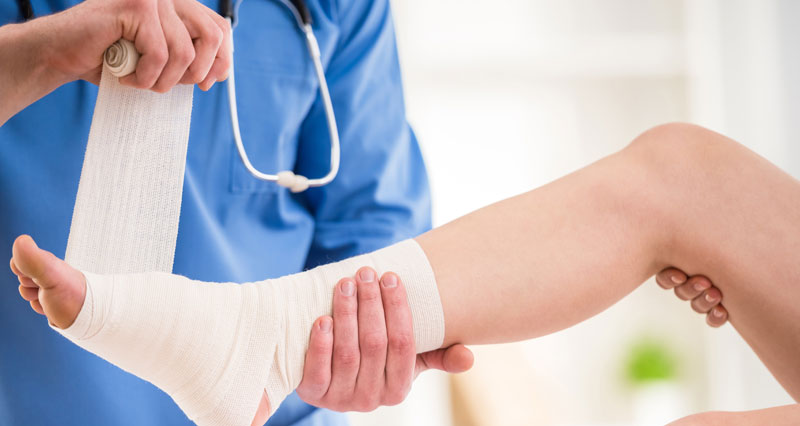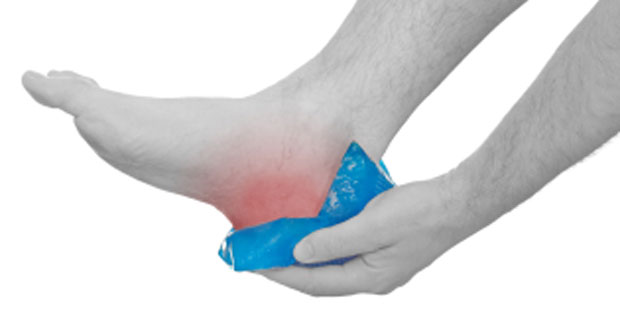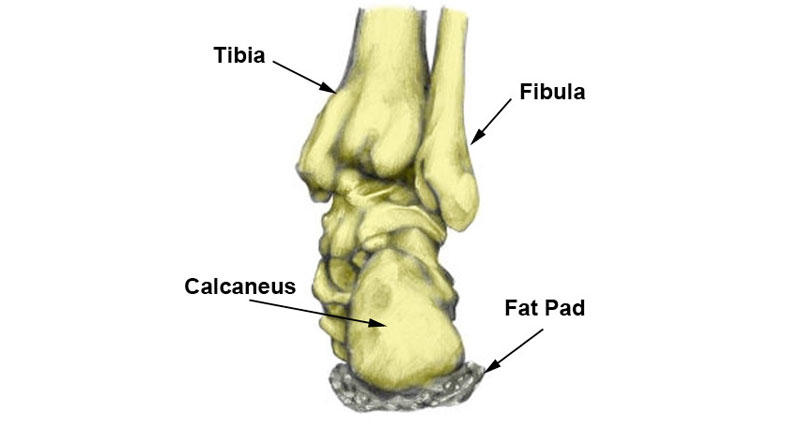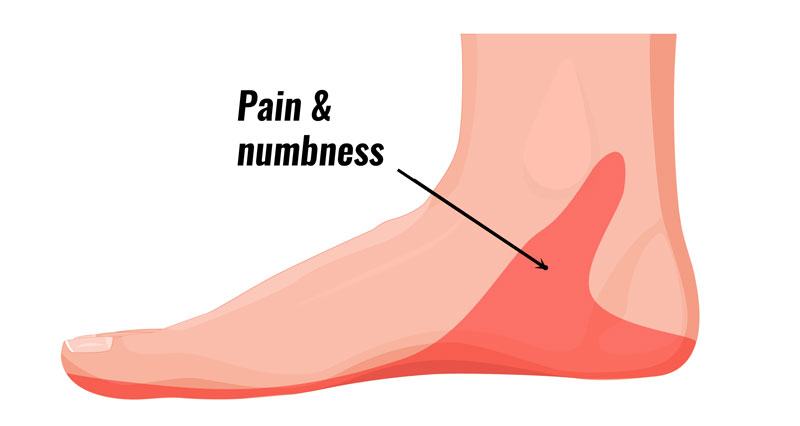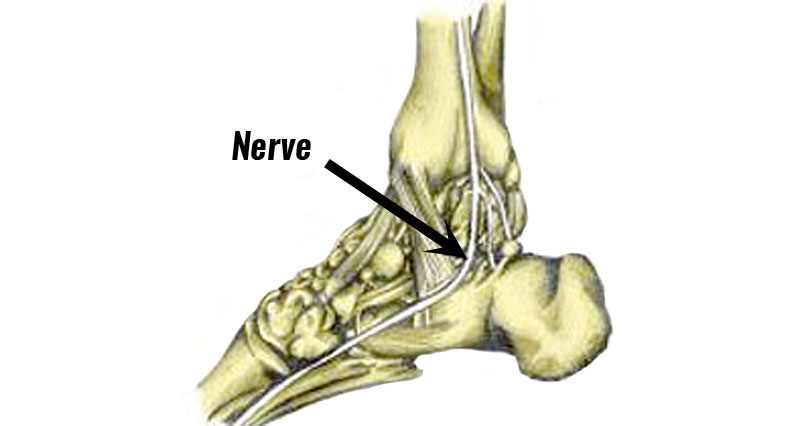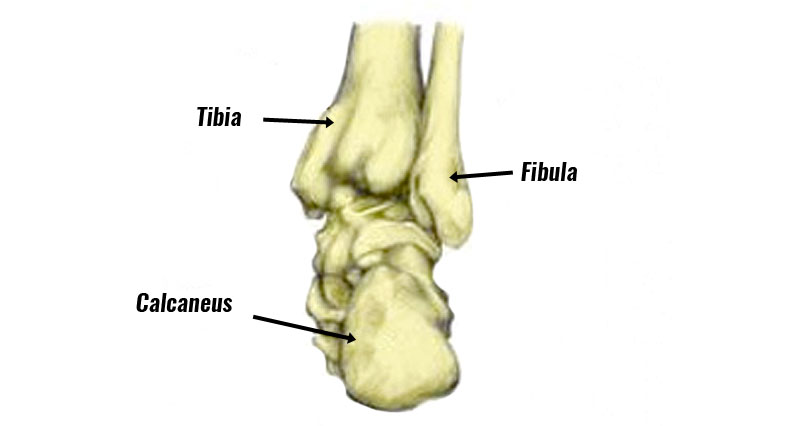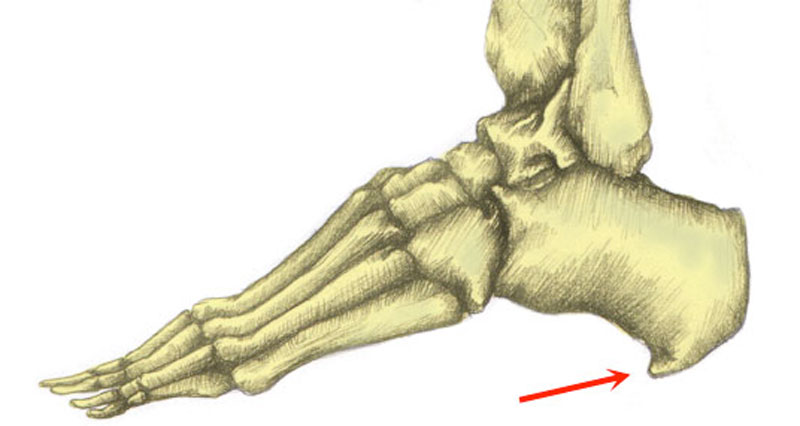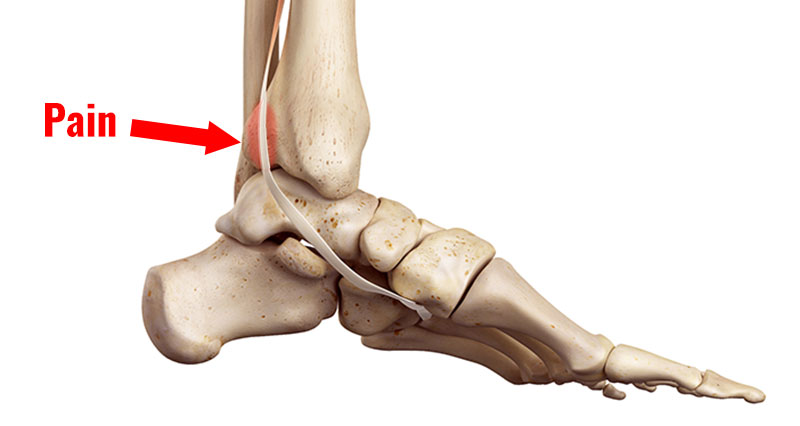Lateral plantar nerve entrapment results in pain on the inside of the ankle and heel. It is caused by compression of the lateral plantar nerve in the foot.
Lateral plantar nerve entrapment symptoms
Lateral plantar nerve entrapment has similar symptoms to Plantar fasciitis and Tarsal tunnel syndrome. These include:
- Pain over the inside of the ankle and heel.
- Pressing in (palpating) along the inside of your foot and ankle, especially near the heel bone may reproduce symptoms.
- Sometimes pain radiates into the middle three toes.
However, numbness in the heel is not normally a symptom of plantar nerve entrapment. Your doctor or physio may use Tinel’s test to help rule out other conditions such as Tarsal tunnel syndrome. Tinel’s sign is not normally present in cases of Lateral plantar nerve entrapment.
Tinel’s test
This is one way of differentiating Lateral plantar nerve entrapment from other nerve impingements such as Tarsal tunnel syndrome.
Tinel’s test involves tapping the nerve just behind the medial malleolus (bony bit on the inside of the ankle) with a rubber hammer. The test is positive if it triggers pain or tingling in your foot.
Local anaesthetic
A doctor may inject the area with a local anaesthetic. If your pain is temporarily eliminated because of the pain-killing injection, then this is a good indication that you have lateral plantar nerve entrapment.
Nerve conduction tests are also sometimes used to help diagnose nerve entrapments.
Anatomy
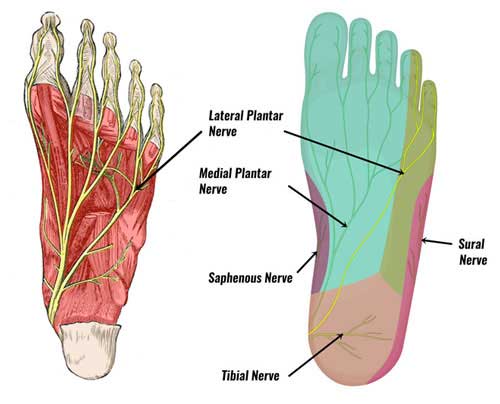
The lateral plantar nerve becomes trapped, or compressed between the abductor hallucis muscle and the quadratus planus muscle along the inside of the foot.
The plantar nerve branches off the posterior tibial nerve after it has passed through a passage called the tarsal tunnel. This is just below the medial malleolus (bony bit on the inside of your ankle).
It branches into two parts:
- The medial plantar nerve (medial means inside)
- The lateral plantar nerve (lateral means outside).
The lateral plantar nerve passes down the inside of the heel and under the foot. It ‘innervates’ the outside two toes. The medial plantar nerve splits off to innervate the middle three toes.
Causes
Patients who overpronate are more susceptible to lateral plantar nerve entrapment. Overpronation is where your foot rolls in too much and flattens when walking or running. As a result, additional pressure is applied to the inside of your foot.
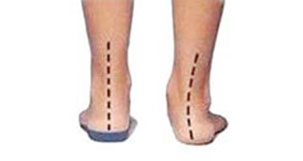
Treatment
Ice/cold therapy
Apply ice or cold therapy for 10 minutes every hour initially. This helps to reduce pain and inflammation. As your symptoms improve reduce the frequency to 3 times per day.
Rest
Avoid using your foot as much as possible. If you continue to walk or train as normal, your injury will not heal.
If your injury is minor then adjusting your training methods by reducing running mileage, or substituting swimming or cycling for running until the injury has healed may be enough.
However, more severe injuries need complete rest.
Medication
Your doctor may prescribe anti-inflammatory medication or NSAIDs (e.g. ibuprofen). Always check with a doctor before taking medication. Do not take ibuprofen if you have asthma.
Taping
Support the arch of your foot with this simple taping technique.
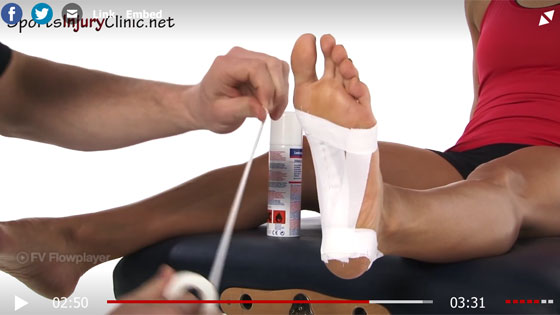
Foot arch taping can often instantly relieve your symptoms. However, it only lasts for a few hours or so because the tape itself stretches. Re-apply regularly.
Orthotic insoles
Your physio may prescribe orthotic shoe inserts to correct biomechanical problems of your foot. This includes overpronation where your foot rolls in (flattens) too much.
Corticosteroid injection
If conservative treatment is unsuccessful then your doctor may give an injection. Corticosteroids are anti-inflammatory drugs. They are either injected locally or taken as tablets.
Injected corticosteroids are more commonly used in musculoskeletal conditions. This is because it concentrates the dose at the site of injury, therefore reducing the risk of side effects.
Corticosteroid injections do have a reputation for being painful, however, this can be limited with the use of a local anaesthetic.
The aim of injecting corticosteroids is to reduce pain and inflammation sufficiently to enable exercises to be done and should be used in conjunction with physical therapy and correction of biomechanical factors.
- More on Corticosteroid injection
Surgery
If all of the options above fail, then you may need surgery. This releases pressure on the nerve (surgical release).
